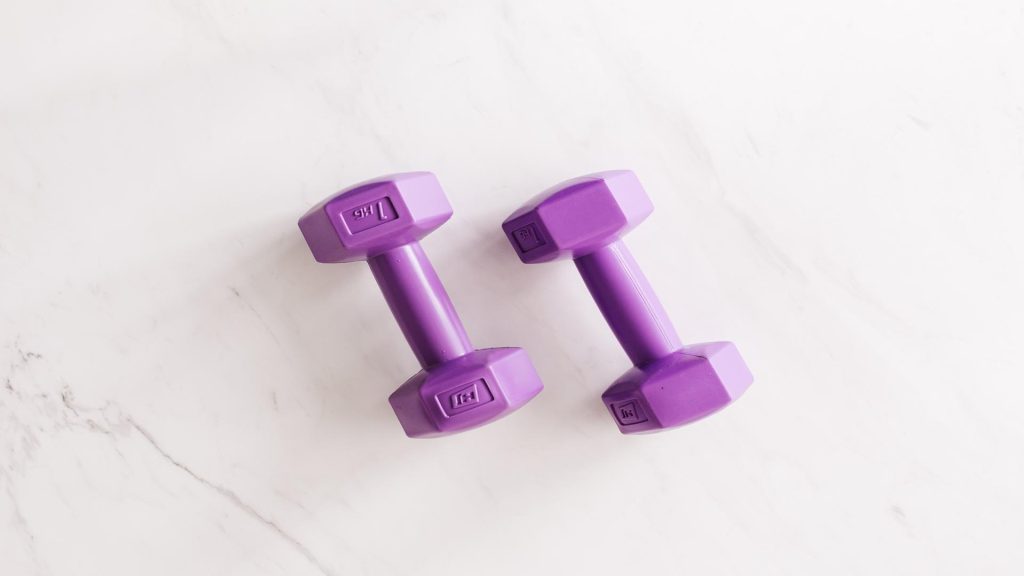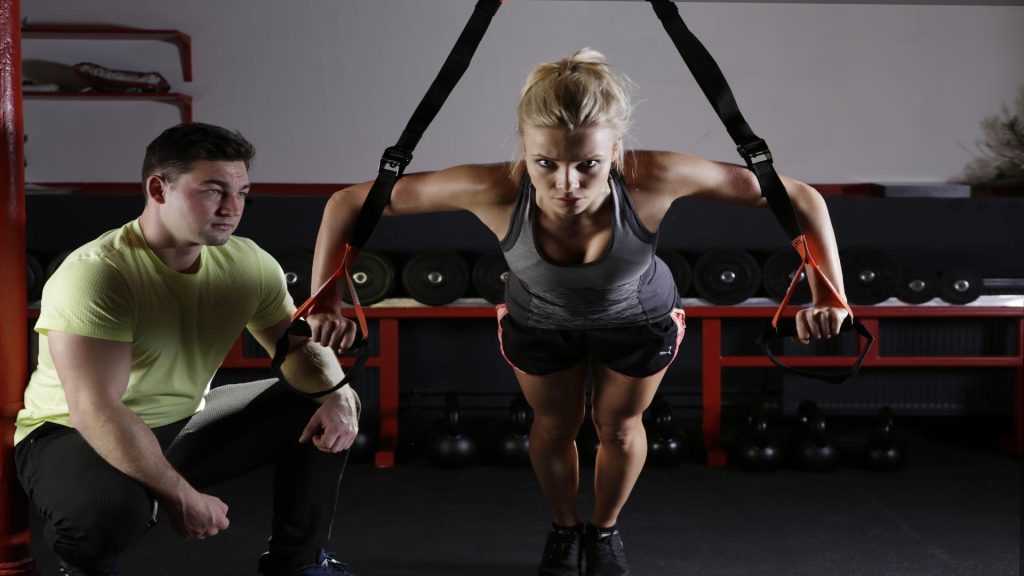
Outline:
-
Introduction to Fitness and Health
- Importance of fitness and health
- Connection between fitness and overall well-being
-
Physical Fitness
a. Definition of physical fitness
b. Benefits of being physically fit
- Improved cardiovascular health
- Increased strength and endurance
- Weight management
- Boosted immune system -
Mental Health and Fitness
a. Importance of mental health in overall well-being
b. How exercise impacts mental health
- Reduced stress and anxiety
- Improved mood and self-esteem
- Enhanced cognitive function -
Nutrition and Fitness
a. Role of proper nutrition in achieving fitness goals
b. Balanced diet and its benefits
- Adequate intake of macronutrients and micronutrients
- Importance of hydration -
Setting Fitness Goals
a. The significance of goal setting in fitness
b. SMART goals framework
- Specific
- Measurable
- Attainable
- Relevant
- Time-bound -
Types of Exercise
a. Cardiovascular exercises
b. Strength training
c. Flexibility exercises
d. Balance and coordination exercises -
Fitness and Health FAQs
a. What is the recommended frequency of exercise?
b. Can fitness improve longevity?
c. How long does it take to see results from exercise?
d. Is it necessary to hire a personal trainer?
e. Can fitness alone guarantee good health? -
Conclusion
- Recap of the importance of fitness and health
- Encouragement to prioritize fitness in daily life
Article:
Introduction to Fitness and Health
Physical fitness and overall health go hand in hand, playing crucial roles in leading a fulfilling life. Fitness encompasses various aspects, including physical, mental, and nutritional well-being. By taking care of our bodies and minds, we can enhance our quality of life and improve longevity.
Physical Fitness
Physical fitness refers to the ability to perform physical activities with vigor and efficiency. Regular exercise and physical activity play a vital role in achieving and maintaining physical fitness. The benefits of being physically fit extend beyond aesthetics. Let's delve into some of these advantages.
Improved Cardiovascular Health
Engaging in regular physical activity helps strengthen the heart and cardiovascular system. Exercise increases the heart rate, improving blood circulation and oxygen delivery to the body's tissues. This, in turn, reduces the risk of heart diseases, such as coronary artery disease and hypertension.
Increased Strength and Endurance
Regular strength training exercises, such as weightlifting and bodyweight exercises, help increase muscle strength and endurance. Strong muscles not only support daily activities but also reduce the risk of injuries and improve posture.
Weight Management
Maintaining a healthy weight is essential for overall health. Regular physical activity, alongside a balanced diet, promotes weight loss and weight maintenance. Exercise helps burn calories and build lean muscle mass, contributing to a more favorable body composition.
Boosted Immune System
Regular exercise enhances the immune system, reducing the risk of various diseases and infections. Moderate-intensity exercise, such as brisk walking or cycling, improves the circulation of white blood cells, which are vital for fighting off pathogens.
Mental Health and Fitness
Mental health is equally as important as physical health when it comes to well-being. Exercise has a profound impact on mental health, helping to alleviate stress, boost mood, and improve cognitive function.
Reduced Stress and Anxiety
Physical activity stimulates the production of endorphins, also known as "feel-good" hormones. These natural mood enhancers help reduce stress levels and alleviate symptoms of anxiety and depression. Engaging in regular exercise can provide a much-needed mental break and improve overall emotional well-being.
Improved Mood and Self-Esteem
Exercise triggers the release of dopamine, serotonin, and norepinephrine, neurotransmitters that contribute to feelings of happiness and well-being. By regularly engaging in physical activity, individuals can experience an uplifted mood and improved self-esteem.
Enhanced Cognitive Function
Exercise has been shown to enhance cognitive function and memory. Physical activity increases blood flow and oxygen delivery to the brain, promoting neurogenesis and improving overall brain health. Regular exercise has even been linked to a reduced risk of cognitive decline and age-related neurological disorders.
Nutrition and Fitness
Achieving and maintaining fitness goals goes hand in hand with proper nutrition. A well-balanced diet provides the necessary fuel for physical activity, aids muscle recovery, and supports overall health.
Role of Proper Nutrition
Proper nutrition provides the macronutrients (carbohydrates, proteins, and fats) and micronutrients (vitamins and minerals) that our bodies require for optimal functioning. Consuming a variety of whole foods, including fruits, vegetables, lean proteins, and whole grains, ensures a well-rounded intake necessary for fitness and health.
Balanced Diet Benefits
A balanced diet offers numerous benefits for our bodies. Adequate protein intake is essential for muscle repair and growth after exercising. Carbohydrates provide energy for physical activity, while healthy fats support brain function and hormone production. Additionally, staying hydrated by drinking enough water is crucial for maintaining overall health and supporting bodily functions.
Setting Fitness Goals
Setting fitness goals is crucial for progress and motivation. By establishing clear objectives, individuals can track their progress and work towards achieving optimal fitness levels. The SMART goals framework is a useful tool to guide goal setting.
SMART Goals Framework
- Specific: Define clear and specific goals, such as running a 5K race or lowering cholesterol levels by a certain percentage.
- Measurable: Set goals that can be tracked and measured, allowing for tangible progress evaluation.
- Attainable: Ensure that the goals set are realistic and achievable, considering individual fitness levels, time commitments, and resources.
- Relevant: Goals should align with personal aspirations and priorities, keeping motivation high.
- Time-bound: Setting a timeline or deadline helps maintain focus and track progress effectively.
Types of Exercise
Incorporating various types of exercises ensures a well-rounded fitness routine. Here are some of the main categories:
Cardiovascular Exercises
Cardio exercises are known for increasing heart rate and improving cardiovascular health. Activities such as running, swimming, cycling, and dancing fall under this category. Aim for at least 150 minutes of moderate-intensity cardiovascular exercise per week.
Strength Training
Strength training exercises focus on building muscle strength and endurance. These can involve free weights, resistance machines, or bodyweight exercises like push-ups and squats. The American College of Sports Medicine recommends strength training workouts at least two times a week.
Flexibility Exercises
Flexibility exercises help improve joint mobility and range of motion. Yoga, Pilates, and stretching routines are excellent ways to enhance flexibility. Include flexibility exercises a few times a week to maintain supple joints and muscles.
Balance and Coordination Exercises
Balance and coordination exercises help improve stability and reduce the risk of falls. Activities such as tai chi, yoga balances, and stability ball workouts can contribute to better overall balance and coordination.
Fitness and Health FAQs
Q: What is the recommended frequency of exercise?
A: The Centers for Disease Control and Prevention (CDC) recommends adults engage in at least 150 minutes of moderate-intensity aerobic exercise or 75 minutes of vigorous-intensity exercise per week, along with muscle-strengthening activities twice a week.
Q: Can fitness improve longevity?
A: Yes, maintaining regular physical activity and good overall fitness can contribute to a longer and healthier life. Studies have shown that physically active individuals have a reduced risk of developing chronic diseases and experience a higher quality of life.
Q: How long does it take to see results from exercise?
A: The time it takes to see results from exercise varies from person to person. Generally, noticeable improvements can be observed after a few weeks of regular exercise. However, individual factors such as fitness level, intensity of exercise, and consistency play significant roles.
Q: Is it necessary to hire a personal trainer?
A: Hiring a personal trainer can be beneficial, especially for beginners or individuals with specific fitness goals. A qualified trainer can provide guidance, create customized workout plans, and ensure proper exercise technique. However, many people are successful in achieving their fitness goals without a personal trainer.
Q: Can fitness alone guarantee good health?
A: While regular exercise and fitness are essential components of maintaining good health, they are not the sole factors. A healthy lifestyle encompasses various aspects, including a balanced diet, stress management, quality sleep, and regular medical check-ups. Holistic well-being is achieved by adopting a comprehensive approach.
Conclusion
Fitness and health are inseparable components of a fulfilling life. Taking care of our bodies and minds through regular physical activity, proper nutrition, and prioritizing mental well-being is crucial. By incorporating exercise into our daily routines, setting realistic fitness goals, and adopting a balanced lifestyle, we can unlock improved physical and mental health that will benefit us in the long run.
� Fitness and Health: A Comprehensive Guide
� HEALTH
� FITNESS
� Learn about the importance of fitness and health, the benefits of physical and mental well-being, nutrition tips, setting fitness goals, and frequently asked questions related to fitness and health.
Thank you for reading. For more insights, visit our #healthzone#3.com/blog">BLOG. We appreciate your support!



